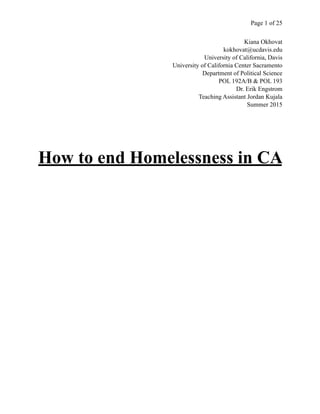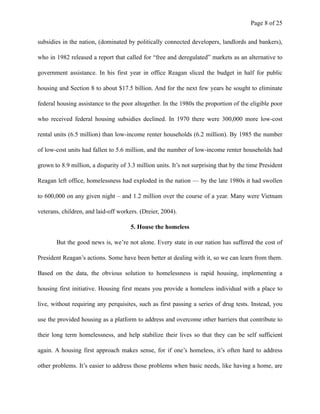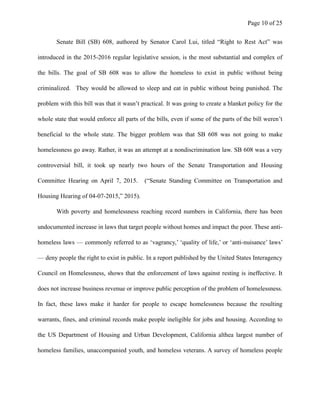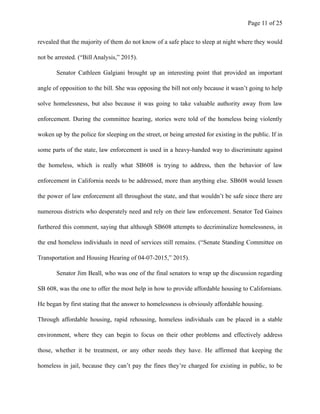This document discusses how homelessness in California relates to human sex trafficking and proposes solutions. It argues that homelessness is the root cause of sex trafficking in the state. The document provides background on homelessness in California, noting that the state has the highest number and percentage of unsheltered homeless people in the US. It discusses how criminalizing homelessness has been an ineffective approach. The relationship between homelessness, survival sex, prostitution, and sex trafficking is explored, showing how being homeless increases vulnerability to exploitation. The document advocates for addressing homelessness through providing affordable housing as a more effective solution than criminalization.
























